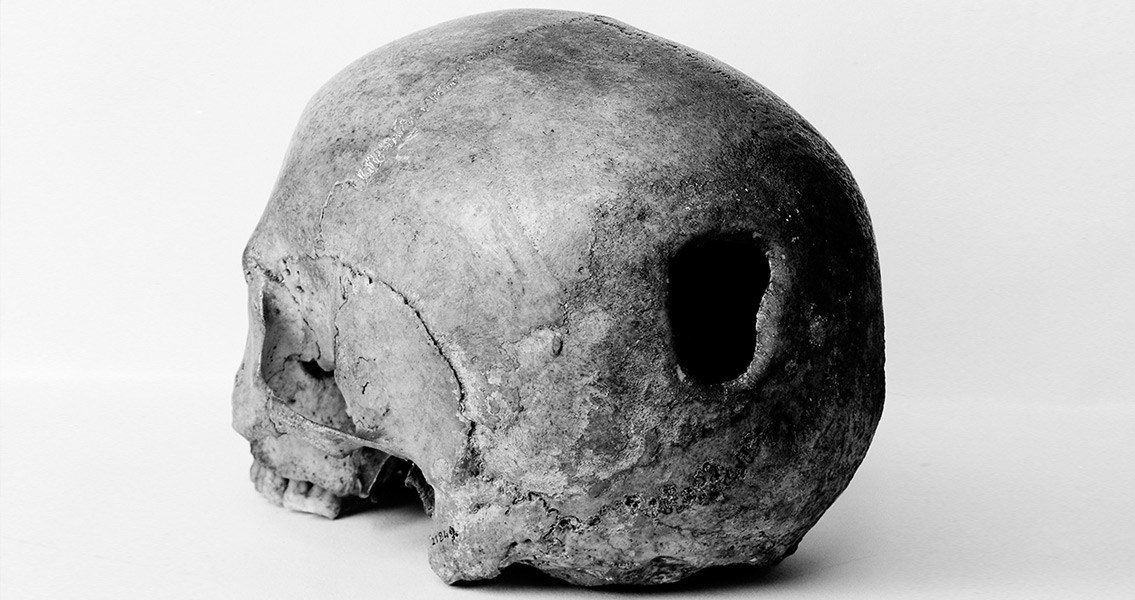<![CDATA[Trepanning, the process of drilling holes into the skull, is the earliest example of surgical treatment among humans. Holes were bored into the patient's skull in order to relieve physical ailments and psychological problems. Examples of trepanning conducted on other bones have never been discovered however, until now. In a recent paper published in the International Journal of Paleopathology, Dr. J. Marla Toyne, from the University of Central Florida, revealed she had identified two skeletons with strange markings. The leg bones, found at the pre-Columbian site Kuelap in north east Peru, appear to display evidence of having been drilled into, in a manner similar to trepanation. These bones, which date from between 800-1535 CE, present the earliest known examples of bone surgery conducted on somewhere other than the skull. "While numerous examples of cranial trepanations using an adjacent drilling technique have been recovered from this site and region," Toyne wrote, "this is the first example of such a surgical technique on a post-cranial element." Trepanation has been found in numerous cases throughout a variety of cultures and the practice has a long history, dating back to the Neolithic period. Researchers believe that ancient people thought abnormal behaviour was caused by evil spirits; illnesses ranging from migraines to mental disorders were treated by trepanning. Pieces of extracted bone would sometimes be fashioned into jewellery and charms, to be worn by ancient patients to ward off illness-causing evil spirits. Some patients survived trepanning, as shown by evidence of subsequent healing and bone re-growth. In the skeletons from Keulap, Toyne notes that there is no evidence of long-term healing, suggesting that the patients did not survive for long after the procedure. Both skeletons from the Keulap site were male, one was aged between 30 and 34 years old at the time of death, while the other was an adolescent. Close examination of their bones revealed that both were healthy overall, there were no signs of major stresses or deformities in their bones. The depth and placement of the drilled holes indicates, Toyne suggests, that the surgeries were intended to alleviate the symptoms caused by an injury or infection. It is possible that the procedures were done in order to relieve pressure from a build up of fluid in the leg. It is currently unclear whether the drilling was conducted on living patients suffering from infection, or on cadavers in order to train novices. Ancient surgical procedures were improved through trial and error, so practice was vital to develop perfect technique. Bioarchaeologist Danielle Kurin notes that ancient skull trepanation required unbelievable skill. Kurin told the Latin Times, “The idea with this surgery is to go all the way through the bone, but not touch the brain... We can tell that they're experimenting on recently dead bodies because we can measure the location and depths of the holes they're drilling... each hole is drilled a little deeper than the last. So you can imagine a guy in his prehistoric Peruvian medical school practicing with his hand drill to know how many times he needs to turn it to nimbly and accurately penetrate the thickness of a skull.” Dr. Toyne concludes that the evidence of drilling into leg bones reveals that ancient Peruvian medics were skilled individuals. Ancient healers, much like their modern-day equivalents, used the latest techniques and knowledge to provide the best care they could for their patients. ]]>
Ancient Peruvians Were Skilled Surgeons
